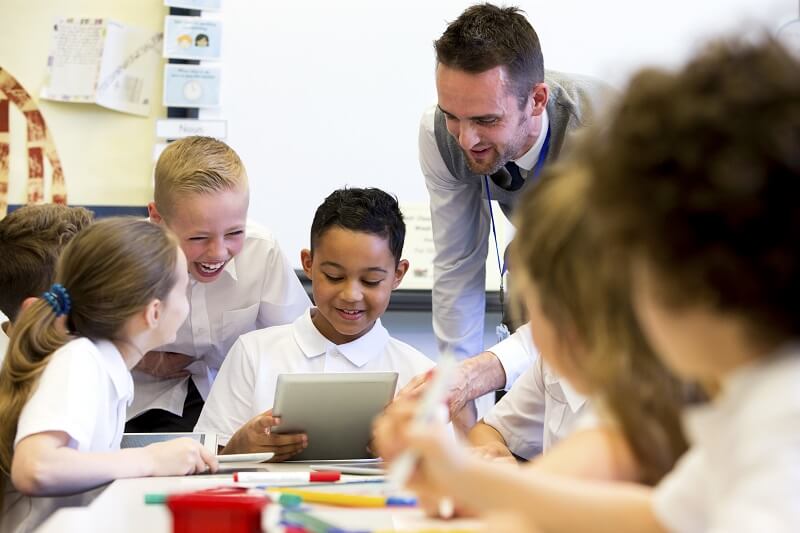This is part of a series of posts from nominees for our LifeChanger of the Year educator recognition program. We meet scores of fascinating LifeChangers every year who have interesting perspectives to share about children, education and life.
As February hit, my first graders were thrilled to show off their knowledge of Dr. Martin Luther King Jr., Muhammad Ali, Rosa Parks and Barack Obama. They figured this year they’d be working on traditional coloring pages and sitting through mini history lessons that they’d soon be expected to recite. While those things can be super engaging and insightful I wanted to pose a unique challenge to my students, so I designed a presentation evaluating several freedom fighters who’ve contributed to change. After the presentation and a small chat when the presentation ended, I asked my students to pick an issue in society or in school that they would be the face of change for.
With this project, many of my six-year olds encountered one of the biggest social and emotional learning exercises of their lives.
They evaluated issues that affected others, labelled them as being problematic while brainstorming and analyzing possible steps to improve the experiences of others in a civic manner. For a group of six-year olds, this social emotional learning activity allowed them to consciously pay attention to social dynamics, emotion and use critical thinking to propose realistic solutions.
Today, hundreds of schools across the country have adapted curriculum, classroom weekly objectives and lesson plans based on social and emotional learning.
In times of global pandemics like COVID-19, it is important to the social and emotional development of children that their feelings are validated, questions be answered and concerns addressed. Educators play very impactful roles in that process and while distance learning can seem impersonal and challenging, there are effective steps we all can take to ensure the social and emotional learning does not stop for students.
EDUCATORS
For starters, if participating in virtual classroom settings, I encourage you to promote students to share their experiences being away from school, their friends and many outside activities. Empower their voices by affirming their truths. It is also imperative to explain the severity of COVID-19, what is happening and how many vulnerable populations are being affected. Explain to them their social responsibility and how they can contribute to the containment of the virus by taking precautionary measures for them and their families. Be sure to also provide students with important updates and make yourself available for one on one time if students need it.
It may also be helpful to redesign lesson plans to address the curriculum through social and emotional lenses to make sure that in a crisis like this students are. For example, if a history class is focused on WWII, lecturing on the social and emotional impact of war, families heavily affected, vulnerable communities and how through those desperate times people still game together mentally to survive. For a science class focused on genetics, maybe a shift to understanding how important public health is and how those genetically predisposed to different conditions may affect their daily lives. These academic shifts may resonate better with students who may now be exposed to social experiences relative to the content, sparking higher interest and attentiveness.
Keeping a routine for distance learning is extremely important. By maintaining a virtual classroom routine promotes organization and structure for students who may find the transition difficult. The routine does not have to be rigid, it can be fun and enjoyable for students too.
Resources for elementary school educators:
- Digital books
- Interactive audio picture books (PreK-1st)
- At home art projects that involve emotion and/or social responsibility
- Encouraging thoughtful conversations with family members
Resources for middle and highschool educators:
- Digital books
- Electronic journaling
- Public health research projects
- Social responsibility research projects
- Encouraging thoughtful conversations with family members
PARENTS
As parents and primary care givers you all serve as the direct source of love and support for your children. This makes it extremely important that developmentally appropriate conversations surrounding the COVID-19 pandemic are taking place. It is normal for children to feel confused, upset, anxious or a little uneasy with all the transition at school, at home and not being able to be around others as they usually would.
Aside from speaking with your children about what COVID-19 is, be sure to explain how impactful self isolation and quarantining is in order to contain the spread of the virus.
In times like this it is also imperative to remember children do not process things as us adults do. Their brains are not fully developed to comprehend panics, crises and periods of anxiety and extreme worry, therefore they need help unpacking.
Learn more about Brianna Nargiso on her LifeChanger of the Year profile.
TC100537(0418)3

